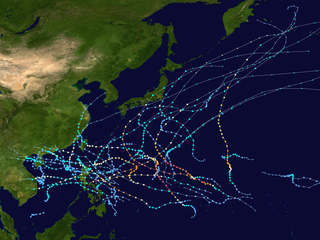See also
Similar names used for other tropical cyclones:
- List of storms named Bining – also used in the Western Pacific Ocean
- List of storms named Bising – also used in the Western Pacific Ocean
- Severe Tropical Storm Melor (2003) (T0319, 24W, Viring) – A Category 1 typhoon that had a similar PAGASA name; affected the Philippines, Taiwan and Japan




